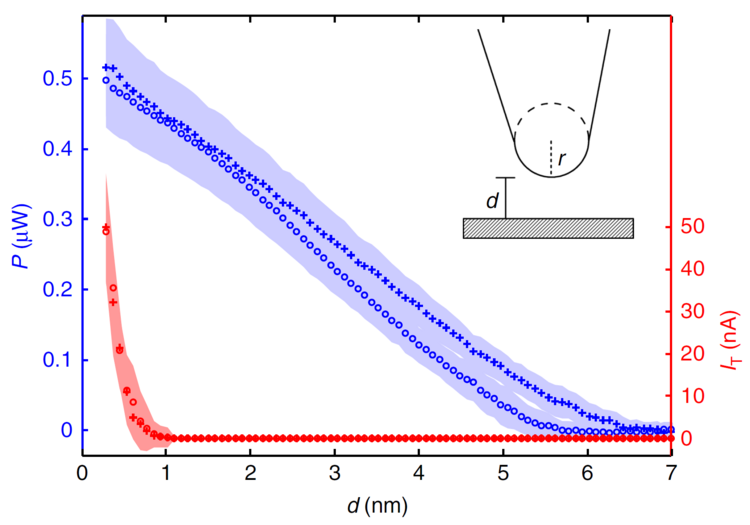Macroscopic thermal radiation can be described using Planck's law for black body radiation. Less research has been done on the heat transfer regime in which the distances are on the order of the thermal wavelength (~10 µm at room temperature). At these scales, besides the propagating modes of the far field, so-called evanescent modes exist, which are coupled to the surface from which they decay in amplitude exponentially. The concept can be imagined similar to quantum-mechanical electron tunneling: to ensure that the steadiness conditions of the wave function at material interfaces are met, there have to be exponentially decaying fields at the surface. If a second body is placed within their range, the electromagnetic fields will couple into this body. This constitutes an additional heat transfer channel which is much larger than heat transfer through the far field. There are additional measurable effects which are not yet fully explained by existing theories. Measuring these effects is the focus of our research.

